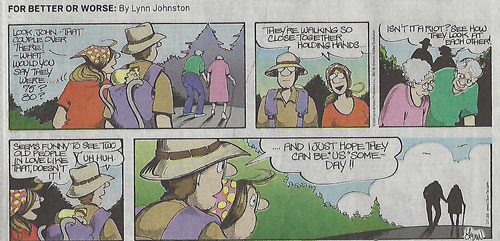Well as comet NEOWISE C/2020 F3 continues to fade, currently at magnitude 4.8, the sun offers a consolation prize with a sunspot. For the rest of the week we have comments about mostly online activities.
But, for the sun, we wee in this Nikon P1000 image below, a lonely sunspot has appeared. So, we are lucky in that we don't always have to stay up late at night, but can instead sleep in and just look at the sun to find out what is happening.
Then, as we watch the sun, we also have to keep watch of the upcoming weather patterns and now Hurricane Hanna is approaching the Texas coast. It seems to be headed for Galveston landing and will spare the SpaceX launch facilities in Boca Chica, but there is a lot of risk for everyone on the coast.
 |
| As hurricane Hanna approaches the Texas coast, SpaceX battens down (Source: @BocaChicaGal) |
We understand that Starship SN5 was getting ready for a static fire test before the test hop and it seems that this activity will most likely be postponed for a couple of days until the hurricane passes through the area.
 |
| As hurricane Hanna approaches the Texas coast, SpaceX battens down (Source: @BocaChicaGal) |
Luckily, now after Hanna has passed though the area, we get news from Boca Chica Gal, Mary, that while the area received a lot of rain and experienced some flooding, but not much damage. Thanks for the news, Mary (@BocaChicaGal)!
 |
| Hanna passed north of Boca Chica (Source: @BocaChicaGal) |
Sadly, Hanna did do a lot of damage along its path, but Boca Chica did not this time. For the rest of us here, away from hurricanes and tornadoes, we wait in our burrows and return to our next risk assessment point regarding the promised delivery of a vaccine for COVID-19. In trying to asses the risk and when the vaccine will be available, we need to go back and review how our immune systems work. To that purpose, I found this "Introduction to Clinical Immunology" series by Professor Katherine Gundling, UCSF available on YouTube. She provides a pretty good introduction to the topic. The 2011 video is available at: https://www.youtube.com/watch?v=_oI0jVN4TTI
 |
| YouTube lecture on clinical immunology by Professor Katherine Gundling (Source: Katherine Gundling, UCSF) |
The video starts with a definition of the immune system and we see it is a very complicated system and involves much of the whole body.
 |
| YouTube lecture on clinical immunology by Professor Katherine Gundling (Source: Katherine Gundling, UCSF) |
I had forgotten that the time course of the system's response to an infection occurred in stages. An early stage of fighting the infection is followed by more advanced components later.
 |
| YouTube lecture on clinical immunology by Professor Katherine Gundling (Source: Katherine Gundling, UCSF) |
This early response comes from antibodies in our system that early on recognize the foreign invader and start to take action. The antibodies, which are complex molecules, bind to the invader and enable other parts of the immune system to identify the invader. The more the infection goes on, the more antibodies will be present. So, this is why we hear in the news how testing for antibodies to COVID-19 is used as an indicator whether the person is infected or not.
 |
| YouTube lecture on clinical immunology by Professor Katherine Gundling (Source: Katherine Gundling, UCSF) |
But, antibodies are just the first response to an infection. Once the infection is identified, the adaptive immune system begins to become effective. This stage relies on more advanced cells, like all the specialized cells outlined in the screenshot below.
 |
| YouTube lecture on clinical immunology by Professor Katherine Gundling (Source: Katherine Gundling, UCSF) |
The main questions we have about immunity today is how long does immunity last once you have been infected and suffer from COVID-19. Can you get the disease a second time after being infected? If the promised vaccine shows up we wonder how long it too will be effective in preventing or limiting the severity of the disease. We will be asked to make decisions, ourselves, in the near future, and we need to be able to make an informed decision.
So, this summary glossed over much of the details, but you get a sense of what level the video goes into the immune system. Check it out if you are interested. If you want a more up to date series of lectures on the immune system, check out the latest Coursera course, "Fundamentals of Immunology", at: https://www.coursera.org/specializations/immunology I think you can still take these online courses for free.
In reviewing viruses and immunity system responses, it reminds us of the question that astronomers and astrobiologists ask themselves all the time, "Is Earth the only planet with life on it?" How do we search for life on other planets and how might it differ from life hear on Earth? Well, there have been many searches and some missions to Mars to look for life, but how do we know what to look for. NASA has used its own definition for some time now, which included the usual characteristics like a self-sustaining chemical system with metabolism, heredity and capability of evolution. Some scientists, in trying to make the definition wide enough so not to exclude some possible life from the searches have further developed the definition. Here is the definition proposed recently by Stuart Bartlett, et al, Caltech. They use a definition based on these four main features: Dissipation, Autocatalysis, Homeostasis and Learning. The authors argue that this definition is more widely based and not as biased as we might think just based on our one sample of life here on Earth.
Bartlett arranges these four pillars of life and then examines how they might interact in the environment. So, we see that the search for life on other planets might find all four pillars or maybe just one or two.
It's not just NASA that is defining and searching for life, but this private organization, "100 Year Starship," was grant funded by NASA, to bring together a wide range of interested persons, including artists and sociologists and historians and sci-fi fans, to meet and explore what life might be like in the rest of the universe. The group just completed its annual meeting, which I was able to attend online, but had forgot to pass on the date to everyone else. Sorry about that! It was interesting to hear about the many different perspectives and this Zoom meeting of hundreds of people, included smaller breakout sessions online which was much more enjoyable because you could be part a smaller group of smiling interested people all discussing the topic.
Ok, it was time to get back to studying Quantum Field Theory and fortunately it was nice weather so I tried to do it out in the open air on the patio. It started off pretty good, just stretch out in a lounge chair, but soon it seemed taking a nap was even a better thing to do! Hmm, maybe field quantization will have to wait till later!
So, that is a bout it for this week. Remember to tune in to the upcoming launch of Mars 2020 spacecraft with rover, Perseverance, this Thursday, July 30, at 7:50 AM Eastern Time. Until then, let's end with a cartoon from the Sunday paper. We each have our journey to follow!
 |
| Defining Lyfe (Source: Stuart Bartlett, et al, www.mdpi.com/journal/life) |
Bartlett arranges these four pillars of life and then examines how they might interact in the environment. So, we see that the search for life on other planets might find all four pillars or maybe just one or two.
 |
| Defining Lyfe (Source: ,Stuart Bartlett, et al, www.mdpi.com/journal/life) |
It's not just NASA that is defining and searching for life, but this private organization, "100 Year Starship," was grant funded by NASA, to bring together a wide range of interested persons, including artists and sociologists and historians and sci-fi fans, to meet and explore what life might be like in the rest of the universe. The group just completed its annual meeting, which I was able to attend online, but had forgot to pass on the date to everyone else. Sorry about that! It was interesting to hear about the many different perspectives and this Zoom meeting of hundreds of people, included smaller breakout sessions online which was much more enjoyable because you could be part a smaller group of smiling interested people all discussing the topic.
 |
| First Contact workshop (Source: https://100yss.org/) |
 |
| In the meantime, continuing studies of QFT on the patio (Source: Palmia Observatory) |
So, that is a bout it for this week. Remember to tune in to the upcoming launch of Mars 2020 spacecraft with rover, Perseverance, this Thursday, July 30, at 7:50 AM Eastern Time. Until then, let's end with a cartoon from the Sunday paper. We each have our journey to follow!
 |
| Hmm, who is the "us" in this cartoon? (Source: Lynn Johnston, OC Register, 07/26/20) |
Until next time, here from our burrow, stay safe, as we recover more of our freedom,
Resident Astronomer George
Be sure to check out over 400 other blog posts on similar topics
If you are interested in things astronomical or in astrophysics and cosmology
Check out this blog at www.palmiaobservatory.com


No comments:
Post a Comment